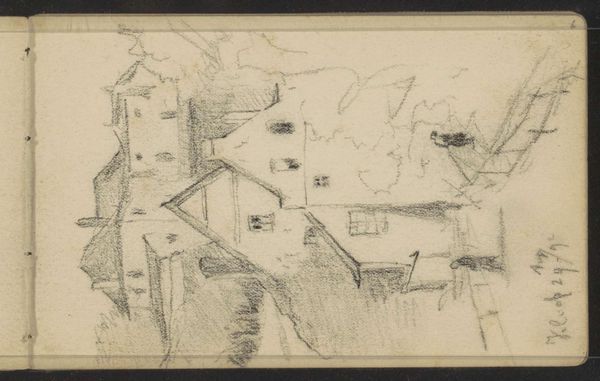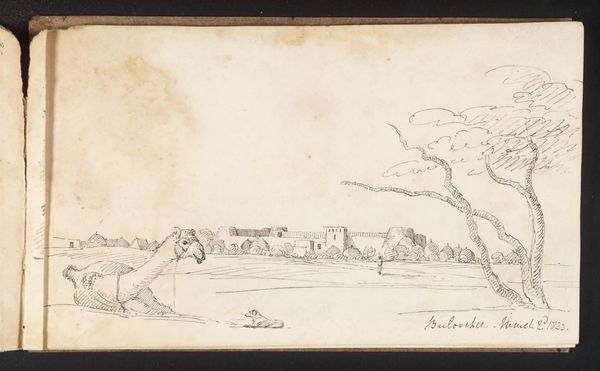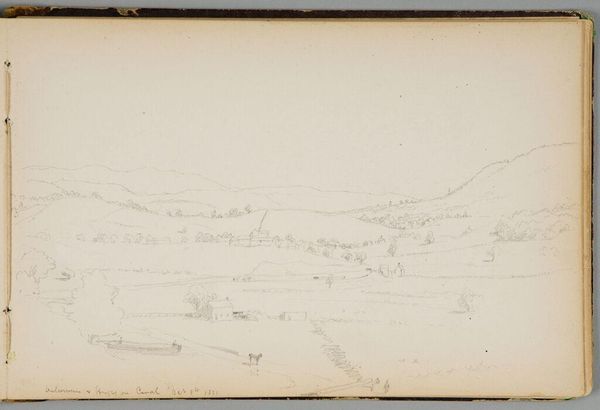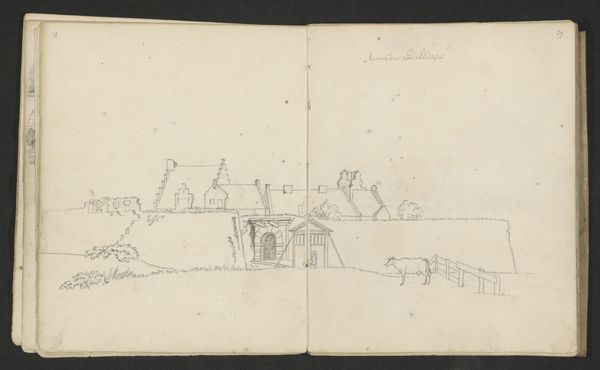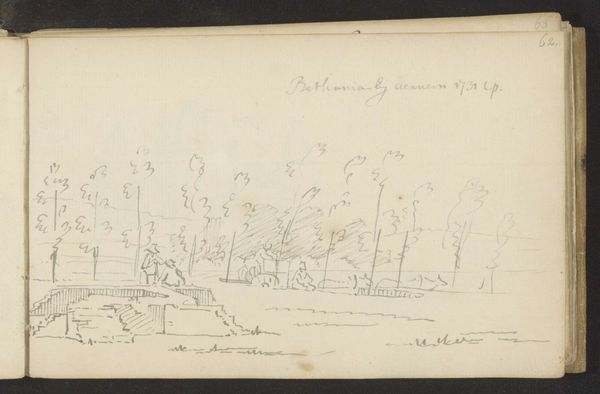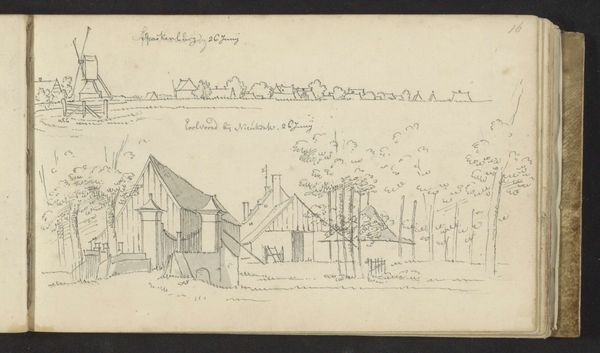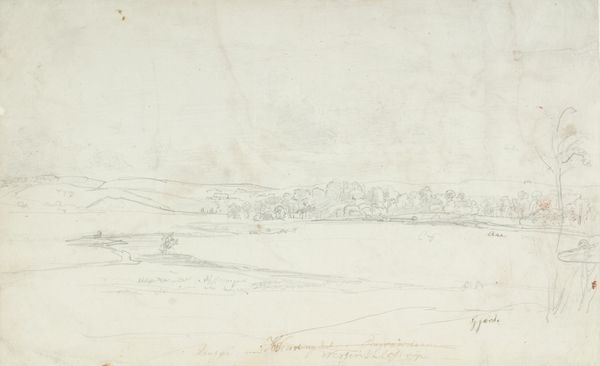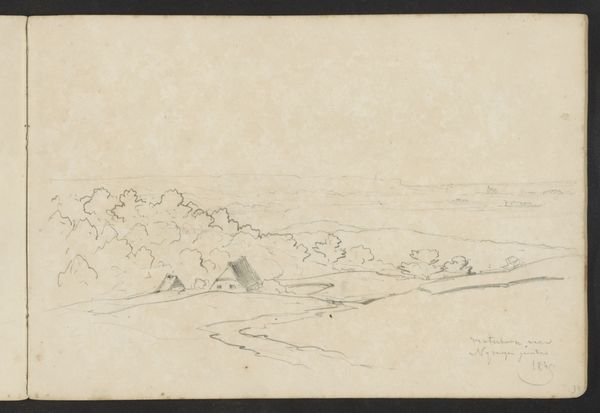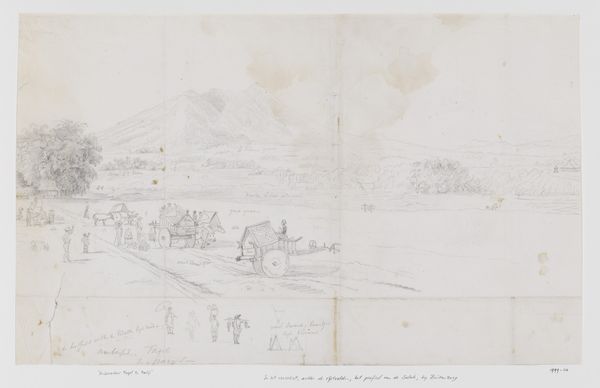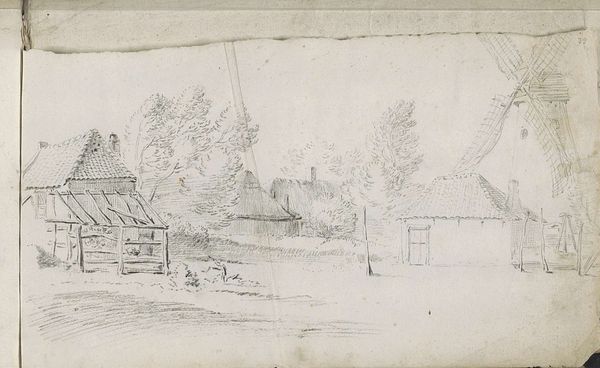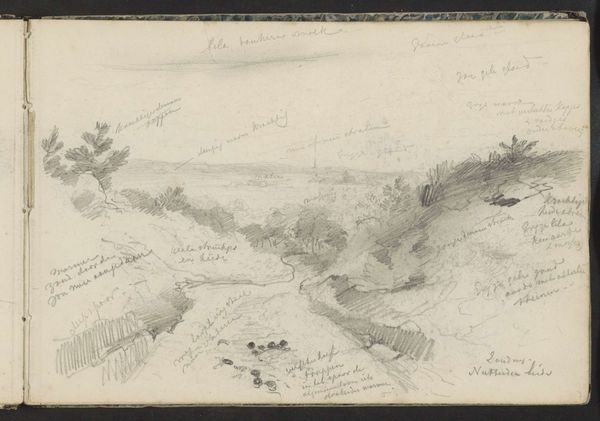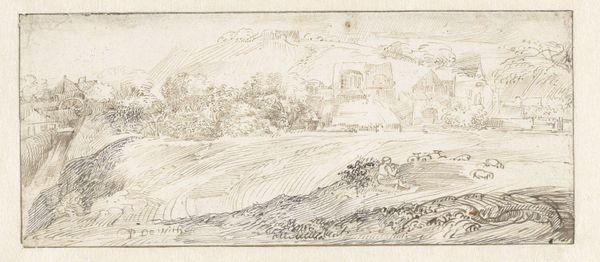
drawing, paper, pencil
#
drawing
#
dutch-golden-age
#
landscape
#
paper
#
pencil
Copyright: Rijks Museum: Open Domain
This is Abraham de Haen the second’s, “Woodland Edge with Hunter's Lodge,” created in the 18th century using pen in brown and gray. De Haen was part of a Dutch artistic tradition rooted in landscape. Consider the socio-economic implications of “the hunt” in 1700s Europe. Hunting was often a privilege of the aristocracy and wealthy landowners. The hunter’s lodge, a literal gate-kept space in the drawing, thus becomes symbolic. It represents both a physical structure and a social construct, embodying ideas of exclusion, leisure, and power dynamics. The landscape isn’t just nature; it's a tableau of societal hierarchies. Look at how the artist uses the medium. With quick strokes he emphasizes the temporality of a sketch, creating an emotional contrast with the imposing and solid structure of the hunter's lodge. What does it mean to sketch a place of privilege? De Haen captures a moment, but also a history of who gets to occupy and enjoy certain spaces.
Comments
No comments
Be the first to comment and join the conversation on the ultimate creative platform.
